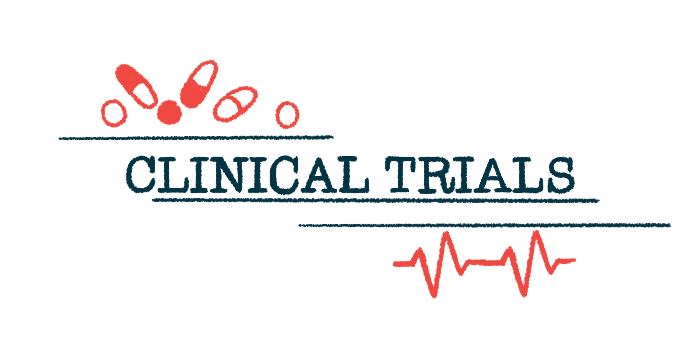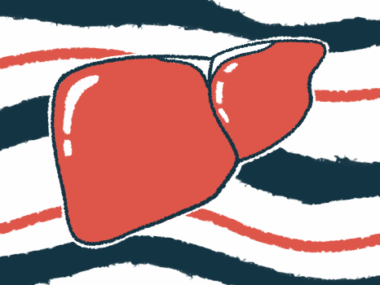CM-101 shows signs of targeting all PSC aspects in Phase 2 trial
Therapy works on inflammation, cholestasis, liver scarring, top-line data show
Written by |

The experimental therapy CM-101 is generally safe and results in signs of improvement in liver health and health of the ducts that transport the digestive fluid bile out of the liver in adults with primary sclerosing cholangitis (PSC), especially those with more advanced disease.
That’s according to preliminary top-line data from the Phase 2a SPRING clinical trial (NCT04595825) announced in a press release from the therapy’s developer Chemomab Therapeutics and shared on a recent company webcast.
CM-101 was found to target all three core aspects of PSC: inflammation, cholestasis, or stalled bile flow, and liver scarring (fibrosis). It is the first investigational PSC therapy to show clinically relevant benefits across these three disease components, according to Chemomab.
“We are thrilled to report the positive results of the Phase 2 SPRING trial that represent a major milestone for Chemomab and establish clear clinical proof-of-concept for CM-101 in PSC and potentially other fibrotic diseases,” said Adi Mor, PhD, Chemomab’s co-founder, CEO, and chief scientific officer.
The company plans to meet with the U.S. Food and Drug Administration (FDA) to discuss the data and the design of a future Phase 3 trial that might support CM-101’s accelerated approval for PSC. “We believe these results provide strong support for advancing CM-101 to a Phase 3 PSC trial, which we are planning to initiate in 2025 after our interactions with the FDA later this year,” Mor said.
Antibody-based therapy targets elevated protein
PSC is a chronic form of cholangitis, or inflammation in the ducts that carry bile from the liver to the intestines. Over time, bile duct inflammation cause damage to these ducts, impairing bile flow (cholestasis) and driving liver damage and fibrosis.
Bile accumulation in the liver along with liver damage increases the chances of bile leakage into the bloodstream, causing symptoms such as itching, or pruritus.
CM-101 is an antibody-based therapy that works by neutralizing CCL24, a protein that’s elevated in PSC patients and involved in the inflammatory and fibrotic pathways that drive PSC-related damage.
Given its anti-inflammatory and antifibrotic properties, CM-101 is expected to help ease bile duct and liver damage and ultimately slow disease progression in PSC patients.
The SPRING study, conducted in the U.S., Europe, and Israel, involved 76 adults with PSC affecting the large bile ducts. About half had moderate or advanced disease and were considered to be at high risk of rapid disease progression.
Participants were randomly assigned to receive either 10 mg/kg or 20 mg/kg of CM-101, or a placebo, via an infusion into the bloodstream once every three weeks for 15 weeks, or just under four months.
Results showed that CM-101 had a favorable safety profile, meeting the study’s main goal. The most commonly reported adverse events, which were usually mild and similarly distributed between treatment and placebo groups, included fatigue, headache, and pruritus. There were no treatment-related serious adverse events.
Both CM-101 doses reduced liver stiffness, an indicator of fibrosis and a validated measure of PSC progression, relative to the placebo at 15 weeks. These differences reached statistical significance in the subgroup of patients with moderate to advanced disease.
Results ‘exciting’
“This is the first time an investigational drug for treatment of PSC demonstrated such significant improvements in liver stiffness in a relatively short study,” Mor said on the webcast. This is a “very exciting” finding also in light of the fact that liver stiffness is likely to be an outcome measure in future Phase 3 testing, Mor added.
The higher CM-101 dose resulted in changes in Enhanced Liver Fibrosis (ELF) scores, a non-invasive indicator of liver fibrosis and disease progression risk, that remained consistently below a recognized threshold used to predict PSC-related clinical events.
Patients with more severe disease and given this dose experienced greater ELF score reductions relative to placebo at all timepoints. PRO-C3, a fibrosis biomarker known to predict survival outcomes in PSC, was reduced with both doses, and increased with a placebo, further supporting the therapy’s anti-fibrotic effects. Still, these differences failed to reach statistical significance.
CM-101 treatment was also associated with dose-dependent reductions in levels of bilirubin, an established cholestasis biomarker, supporting its anti-cholestatic effects.
Greater reductions in pruritus relative to a placebo were observed as soon as six weeks after the first dose of CM-101 and were sustained across all timepoints, reaching statistical significance at the 10 mg/kg dose after 15 weeks.
A range of liver enzymes were reduced with CM-101 treatment, generally reflecting improved liver health.
In the more advanced patient subgroup, the higher dose was also associated with significantly greater reductions in the blood levels of inflammatory molecules associated with CCL24’s activity.
“We believe these broad and consistent quality results provide a very strong foundation for advancing CM-101 in PSC … and provide the first clinical proof-of-concept for CM-101,” Mor said on the webcast.
After completing the trial’s placebo-controlled part, more than 90% of participants opted to enter an ongoing open-label extension phase, where all are receiving CM-101 for about 7.5 months. Top-line results from this portion are expected in the first quarter of 2025.








